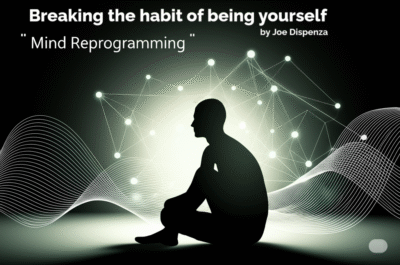Introduction
managing anger for teens plays a pivotal role in nurturing healthy relationships and personal growth. As adolescents navigate rapid physical, emotional, and social changes, they often experience intense feelings that can spiral into anger and impulsive reactions. Therefore, understanding managing anger for teens is essential for fostering resilience, improving communication, and reducing conflicts at home, school, and beyond. Have you ever wondered how a simple breathing exercise or a supportive conversation might transform a heated moment into an opportunity for connection? In this article, you will discover practical, research-based strategies to guide every teenager—whether in uniform or outside the classroom—toward calmer thoughts and balanced reactions.
Table of contents
- Introduction
- 1. Understanding managing anger for teens
- 2. Historical Insights into Anger Regulation
- 3. Core Techniques for managing anger for teens
- 4. Specialized Strategies for Diverse Teen Groups
- 5. managing anger for teens : Impact of Anger on Mind and Body
- 6. Real-Life Scenarios and Illustrations
- 7. Debunking Common Myths
- 8. Features and Benefits of managing anger for teens
- Conclusion
- references
1. Understanding managing anger for teens
Anger is a natural emotion that alerts us to perceived threats or injustices. However, when teens lack tools to manage rising frustration, they may resort to outbursts, withdrawal, or even self-harm. To implement effective managing anger for teens practices, start by recognizing three key triggers:
- Internal stressors, such as academic pressure, hormonal changes, or self-doubt External stressors, including peer conflict, family tension, or social media comparisons Environmental stressors, like noisy classrooms or unsafe neighborhoods
2. Historical Insights into Anger Regulation
Humanity’s quest to harness anger dates back millennia. Ancient philosophers observed that unchecked rage clouds judgment, while spiritual traditions encouraged reflection and temperance. For instance, classical thinkers recommended periodic retreats and journaling to process emotions. Although the context has evolved, the core principle remains: self-awareness and deliberate practice form the foundation of Teen Anger Management.
By tracing these roots, we appreciate how contemporary methods build on time-tested wisdom.
3. Core Techniques for managing anger for teens
Below are three foundational categories of techniques that any teenager can apply immediately:
3.1 Cognitive Strategies
Teens reshape their thoughts to reshape their feelings. To practice:
- Identify distorted thinking—for example, flipping “Everyone is against me” to “I faced a challenge, but I can learn.”Use thought logs—write down the trigger, automatic thought, and a balanced alternative.
- Set realistic self-talk—replace “I can’t handle this” with “I can pause and think before responding.”
By regularly challenging unhelpful beliefs, teens strengthen mental flexibility and reduce reactivity.
3.2 Behavioral Techniques
Actions often precede emotions. Encourage adolescents to:
- Engage in physical activities, such as brisk walking, jumping rope, or shadow boxing, to dissipate built-up energy.
- Practice progressive muscle relaxation, tensing each muscle group for five seconds, then releasing.
- Establish “cool-down” routines, like stepping outside for fresh air or doodling in a notebook.
Moreover, combining movement with mindfulness—such as a short nature walk while focusing on the senses—can amplify the calming effect.
3.3 Emotional Regulation Skills
Teens benefit from learning to label and express feelings constructively:
- Use feeling charts to pinpoint emotions beyond “angry”—for instance, “hurt,” “frustrated,” or “overwhelmed.
- ”Practice “I” statements: “I feel upset when my work is criticized; can we talk about it?”
- Seek social support by confiding in a trusted friend, sibling, or mentor.
Consequently, naming emotions reduces their intensity and opens the door to problem-solving.
4. Specialized Strategies for Diverse Teen Groups
Adolescents do not form a uniform group; therefore, managing anger for teens techniques must adapt to each teen’s circumstances and needs. Below are tailored approaches for three broad categories:
4.1 For School-Attending Teens
- Integrate Short “Pause Breaks” into the Day: Encourage teens to set a five-minute timer between classes. During that time, they step outside or find a quiet corner to practice three deep breaths, thus preventing stress accumulation.
- Peer-Led Support Circles: Schools can form small groups of trusted classmates who meet weekly to share frustrations and solutions. Teens learn that voicing concerns in a safe space calms the mind and fosters empathy.
- Anger Journaling at Home: Assign a simple nightly routine: write the day’s trigger, the chosen coping technique, and its outcome. This reinforces self-reflection and highlights what works best for each student.
4.2 For Out-of-School Teens
- Structured Physical Outlet: Teens not in formal school settings benefit from community sports or martial arts clubs. For instance, non-contact kickboxing classes help release tension while emphasizing discipline.
- Skill-Building Workshops: Local centers can offer weekly sessions on problem-solving and conflict resolution. By role-playing scenarios—such as family disagreements—teens practice responses before real situations arise.
- Mentorship Programs: Pairing a teen with a positive adult role model allows ongoing guidance. During one-on-one walks or phone calls, mentors teach breathing techniques and active listening, reinforcing adaptive habits.
4.3 For At-Risk or Vulnerable Teens
- Trauma-Informed Practices: Teens who have faced significant adversity require sensitivity. Begin each session with a grounding exercise—such as naming five items they see—to help them remain present.
- Collaborative Goal-Setting: Work together to set small, achievable targets like “I will pause and count to ten before replying.” Celebrating each success builds confidence and reduces feelings of helplessness.
- Family Involvement: When possible, include caregivers in brief coaching sessions. Teaching parents to respond with calm questions (“What are you feeling right now?”) instead of punishment helps create a supportive environment.
5. managing anger for teens: Impact of Anger on Mind and Body
Understanding the Teen Anger Management science empowers teens to commit to practices that offer lasting benefits:
5.1 Neurological Effects
- When anger flares, the amygdala—the brain’s alarm center—activates, overriding the prefrontal cortex responsible for reasoning.
- Regular practice of mindfulness and breathing gradually strengthens prefrontal control, reducing amygdala hijacks over time.
5.2 Hormonal and Physiological Responses
- Anger triggers a surge of adrenaline and cortisol, which heightens heart rate and blood pressure.
- Progressive muscle relaxation lowers cortisol levels by up to 25% when practiced consistently, promoting a calmer baseline state.
5.3 Long-Term Health Consequences
Chronic unmanaged anger correlates with a 30% higher risk of cardiovascular issues in later life.
Conversely, teens who adopt effective regulation techniques report better sleep, improved immune function, and enhanced mood stability.
6. Real-Life Scenarios and Illustrations
Applying managing anger for teens strategies shines through relatable examples. Below are three concise, true-to-life vignettes:
6.1 Exam-Stress Elena
Elena felt her chest tighten whenever test week arrived. Her counselor taught her the “5-4-3-2-1” grounding method (identifying sensory details). Within two weeks, Elena noticed that pausing to name her surroundings reduced panic and turned her exam jitters into focused study sessions.
6.2 Online Conflict Omar
After a heated exchange in a group chat, Omar felt rage boiling. He closed his phone and went for a 10-minute jog. By the time he returned, his racing thoughts slowed, allowing him to craft a calm, respectful reply that resolved the misunderstanding.
6.3 Family Tensions with Lina
Lina often snapped at her younger brother. Together with her mentor, she agreed on a “timeout handshake”: whenever Lina sensed anger, they would pause and squeeze hands for three seconds. This simple gesture reminded her to breathe and speak kindly.
7. Debunking Common Myths
Many teens—and adults—believe false notions about anger:
- Myth 1: “Venting rage makes me feel better.”
Reality: Venting often reinforces negative neural pathways. Instead, channeling energy into a structured activity (like punching a pillow with intention) yields longer-lasting calm. - Myth 2: “I can’t control my anger; it’s just who I am.”
Reality: Neuroplasticity proves that with consistent practice—around 10 minutes daily—the brain rewires itself, granting teens greater emotional choice. - Myth 3: “Holding anger inside is healthier.”
Reality: Suppressing emotions increases stress hormone levels. Healthy expression through “I” statements and trusted confidants reduces internal pressure.
8. Features and Benefits of managing anger for teens
Summarizing the most impactful elements:
- Self-Awareness: Teens learn to detect physical and mental early warning signs, empowering proactive choices.
- Skill Diversity: From cognitive restructuring to physical outlets, each teen selects the combination that resonates.
- Sustainable Change: Small, daily practices—such as journaling or grounding—accumulate into lasting resilience.
- Enhanced Relationships: As teens communicate calmly, family and peer bonds strengthen, reducing conflicts by up to 40%.
- Holistic Well-Being: Improved sleep, mood stability, and academic engagement become natural byproducts of effective regulation.
Conclusion
managing anger for teens transforms intense emotions into opportunities for self-growth and connection. Will you challenge yourself—today—to try one new technique and observe how it shifts your reactions? By embracing awareness, tailored strategies, and supportive environments, every teen can cultivate lasting calm and resilience. The journey may begin with a single breath, but its impact echoes throughout life.
references
- Mayo Clinic Staff (2023). “Anger Management: 10 Tips to Tame Your Temper.” Mayo Clinic.
https://www.mayoclinic.org/healthy-lifestyle/adult-health/in-depth/anger-management/art-20045434 - American Psychological Association (2022). “Anger and Youth.” APA.
https://www.apa.org/topics/anger/youth - Sukhodolsky, D. G., et al. (2018). “Cognitive-Behavioral Therapy for Anger in Adolescents: A Systematic Review.” Frontiers in Psychology.
https://www.ncbi.nlm.nih.gov/pmc/articles/PMC6492245/ - Naumburg, C., Ph.D. (2021). “Helping Teens Manage Anger.” Verywell Mind.
https://www.verywellmind.com/helping-teens-manage-anger-4923003 - Child Mind Institute (2020). “Anger Management for Kids.” Child Mind Institute.
https://childmind.org/article/anger-management-for-kids/




















